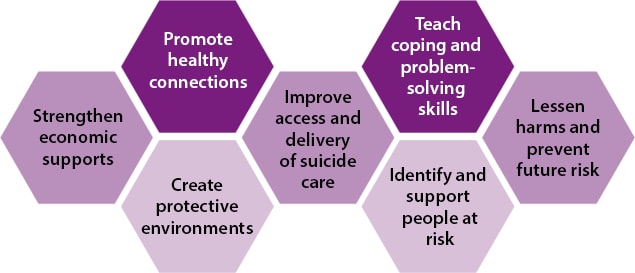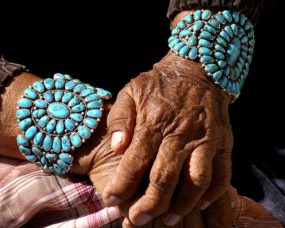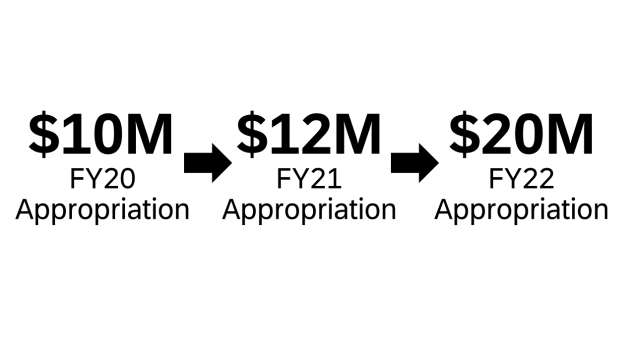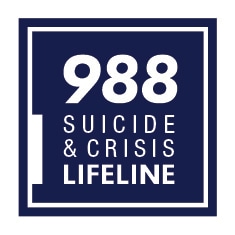NCIPC Suicide Prevention Funding
The Centers for Disease Control and Prevention (CDC) National Center for Injury Prevention and Control (NCIPC) funds states, tribes, territories, non-governmental organizations, and university research programs to track and monitor suicide related outcomes, build implementation capacity, and implement and evaluate suicide prevention strategies and approaches with the best available evidence.

Preventing suicide and self-harm is a priority across our country. Prevention efforts in states and communities are built on seven key strategies from the Suicide Prevention Resource for Action [108 pages] and informed by use of more near real-time data through syndromic surveillance in additional jurisdictions.
State Snapshots
Select a funded state from the map or data table below to view a snapshot of the suicide prevention activities supported by NCIPC. Each snapshot contains:
- Overall suicide prevention fiscal year (FY) 2022 funding, including program categories and recipient information
- Key suicide-related statistics
- Examples of how states are working to prevent suicide
Hover over the map to quickly view information about the funding and burden for each state. Use the filter to see which states are funded by each program.
Tribal Suicide Prevention
In FY20, NCIPC began funding tribal organizations through CDC’s umbrella cooperative agreement, Tribal Public Health Capacity Building and Quality Improvement Cooperative Agreement, to tailor, implement, and evaluate suicide prevention programs with the best available evidence to reduce suicide-related morbidity and mortality among American Indians and Alaska Natives (AI/AN).
The tribal recipients and their associated annual funding amounts are below:
- Southern Plains Tribal Health Board: $265,000
- Wabanaki Health and Wellness: $265,000

To learn more about tribal suicide prevention efforts, read more below in the Examples of Activities and Progress section on this page.
Funding Over Time
Congress directed an appropriation line to NCIPC for suicide prevention activities in 2020. NCIPC used these appropriations to expand funding to a variety of state, territorial, tribal, and non-governmental organizations. The visuals below represent major suicide prevention awards and are not inclusive of all funding related to suicide prevention.

In FY 2020, NCIPC received a new appropriation line for suicide prevention. Initially funded at $10 million, the FY 2022 appropriation was $20 million.
 Comprehensive Suicide PreventionRecipients are implementing and evaluating a comprehensive public health approach to suicide prevention. Some of these recipients are also collecting emergency department syndromic surveillance of nonfatal suicide-related outcomes. (for example, suicide attempts and suicidal ideation)
Comprehensive Suicide PreventionRecipients are implementing and evaluating a comprehensive public health approach to suicide prevention. Some of these recipients are also collecting emergency department syndromic surveillance of nonfatal suicide-related outcomes. (for example, suicide attempts and suicidal ideation) Veteran Suicide PreventionVeteran-serving organizations are building their capacity to evaluate their upstream suicide prevention activities using CDC’s Evaluation Framework
Veteran Suicide PreventionVeteran-serving organizations are building their capacity to evaluate their upstream suicide prevention activities using CDC’s Evaluation Framework Tribal Suicide PreventionTribal organizations are tailoring, implementing, and evaluating suicide prevention strategies with the best available evidence in their communities
Tribal Suicide PreventionTribal organizations are tailoring, implementing, and evaluating suicide prevention strategies with the best available evidence in their communities
Where We’ve Been
NCIPC’s national leadership and increased support to states, territories, tribes, and non-governmental organizations is working to prevent suicide across the United States. Learn more about the key milestones and programs since 2019.
Examples of Activities and Progress
With CDC funding, states, tribes, territories, and other organizations are initiating and expanding suicide prevention activities. Examples of progress are highlighted below. These samples of activities are intended to illustrate the work and are not inclusive of all efforts.
NCIPC funds Injury Control Research Centers (ICRCs) to conduct research, training, and outreach to study ways to prevent injuries and violence and to work with community partners to put research findings into action. Six Injury Control Research Centers are currently conducting suicide prevention research.
Through a cooperative agreement with CDC, the Prevention Institute updated content in CDC’s Suicide Prevention Resource for Action [108 pages] and developed modules that provide a foundation for activities like virtual tools during periods of infrastructure disruption.
CDC joined with the Association of State and Territorial Health Officials (ASTHO) and the National Association of County and City Health Officials (NACCHO) to develop a tool to aid jurisdictions in assessing their current organizational capacity. The Suicide, Overdose, and Adverse Childhood Experiences Prevention Capacity Assessment Tool (SPACECAT) invites agencies to consider their capacity as it relates to ACEs, overdose, and suicide, in the context of the ecological framework. The site contains downloadable resources, videos, training.
Approximately $4 million in COVID-19 funding was divided evenly amongst 22 of 23 Core State Violence and Injury Prevention Program (Core SVIPP) recipients to help states address suicide and ACEs prevention, including enhancing virtual implementation of prevention resources. Hawaii did not apply for this funding. For example, North Carolina’s Department of Health and Human Services partnered with the University of North Carolina’s Injury Prevention Research Center to implement the ACEs and Suicide Prevention in a Remote Environment (ASPIRE) project.
*The name CORE SVIPP changed to Core State Injury Prevention Program (Core SIPP) in FY21 under NOFO CE21-2101
Twelve Indian Health Service Regional Tribal Health Boards received $1 million in COVID-19 response funding to support improving capacity and prevention for intimate partner violence, suicide, and ACEs, including assessing behavioral health needs, creating communication toolkits, and improving data and surveillance.
CDC has a wide variety of research, data, and information that can inform evidence-based policy. CDC developed POLARIS to centralize policy-relevant tools, training, and resources on various health topics.
Safe States Alliance was funded approximately $950,000 to address ACEs and suicide prevention activities during the pandemic. In collaboration with the American Foundation for Suicide Prevention (AFSP) and the National Action Alliance for Suicide Prevention (Action Alliance), they created a variety of resources, including community suicide prevention messages, workforce trainings, and web resources. Some of these resources include the National Mental Health and Suicide National Response to COVID 19, two online hubs to help injury and violence prevention practitioners adapt to the changing landscape (INsiders and COVID-19 IVP Resource Hub), and over 150 suicide prevention education programming events to a virtual format for a national audience.
Contact the 988 Suicide and Crisis Lifeline if you are experiencing mental health-related distress or are worried about a loved one who may need crisis support.
- Call or text 988
- Chat at 988lifeline.org
Connect with a trained crisis counselor. 988 is confidential, free, and available 24/7/365.
Visit the 988 Suicide and Crisis Lifeline for more information at 988lifeline.org.
